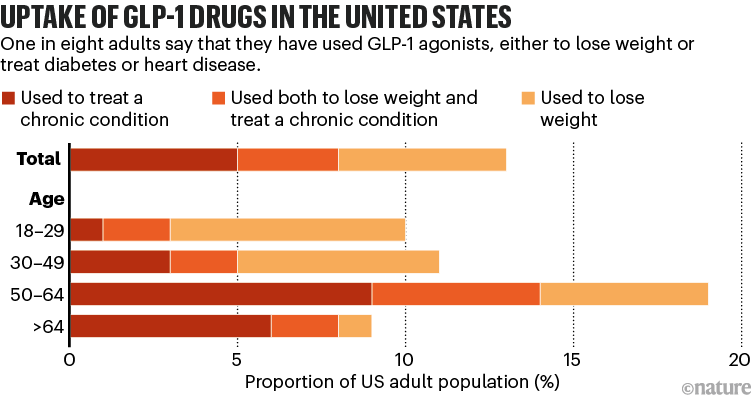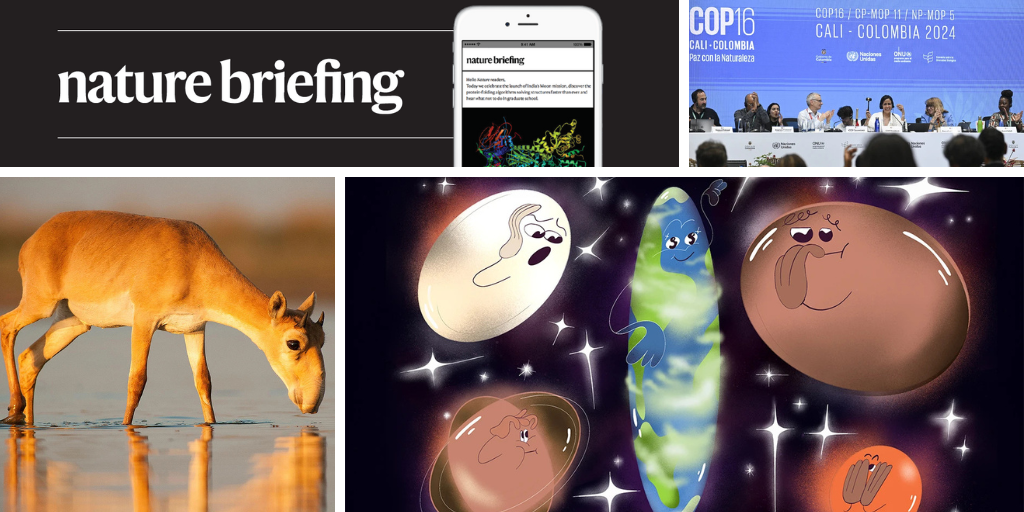Hello Nature readers, would you like to get this Briefing in your inbox free every day? Sign up here.
The last plenary session of the COP16 biodiversity summit in Cali, Colombia, wrapped up on 2 November.Credit: Joaquin Sarmiento/AFP via Getty
Funding questions took centre stage at a United Nations biodiversity summit (COP16) that wrapped up last week in Colombia. Although around US$163 million was pledged to protect and restore nature, that amount is well short of the $200 billion per year that nations agreed will be needed to attain the goal of protecting 30% of the world’s land and seas by 2030. But there were hopeful indications of how some cash might be gleaned from the private sector. Negotiators approved an agreement that paves the way for large companies to pay for the use of genetic information extracted from nature. “It is a voluntary mechanism, so there’s everything to be seen about how we get that to work and make sure companies are doing it,” says ecosystems researcher Yadvinder Malhi. But “it is a big, big win, and we have to go further with it”.
Nature | 6 min read
Symbols engraved on cylinders that were used by traders to print motifs on clay tablets might have influenced the earliest-known form of writing. Researchers examined some of these cylinders from Mesopotamia, now southern Iraq, dating back to 4400 BC, around 1,000 years before the known invention of writing. They identified several symbols they think later developed into signs in ‘proto-cuneiform’, the precursor to the earliest version of written script. The findings support a theory first suggested in the 1990s by archaeologist Holly Pittman, but other experts caution that although some symbols on the cylinders might resemble those in proto-cuneiform, there is no obvious causal relationship linking them.
A remote-controlled robot has successfully collected a tiny piece of melted nuclear fuel from the inside of the Fukushima Daiichi nuclear power plant, which was shut down after suffering major damage in an earthquake and tsunami in 2011. The robot clipped a piece of fuel that weighed less than 3 grams from inside the Unit 2 reactor core and brought it back to assess its radioactivity. Analysing the melted fuel debris is essential to determine how best to remove, store and dispose of the roughly 800 tonnes that remain.
Features & opinion
“Short of some crazy unfortunate side effect, this is going to change the world,” says gastroenterologist Chin Hur about blockbuster GLP-1 agonist drugs such as semaglutide, which is sold as Ozempic for diabetes and Wegovy for weight loss. Reducing obesity globally could have huge societal advantages, from improving people’s quality of life to reducing health and education disparities, but their future benefit is still shrouded in uncertainty. The long-term health impacts of these drugs are unclear, and they remain prohibitively expensive for most people, leaving medical researchers and companies scrambling to gather more data and develop better tools to assess how weight-loss drugs could transform societies.
Nature | 11 min read

Source: KFF & US NCHS/CDC
Biologist Paul Ehrlich’s 1968 book The Population Bomb forecasted a famine-ridden future that didn’t come to pass. The dire predictions he makes in his new book, Before They Vanish, seem more likely — but the book is flawed, argues conservation scientist Julia Jones in her review. “It’s a pessimistic portrayal, which undersells reasons to be optimistic about conservation,” she writes. “This matters because optimism has a contribution to make in slowing extinctions.”
Nature | 8 min read
A lab leader — who has had run-ins with poor mentors herself — feels guilty after asking a PhD student to leave her laboratory in the latest advice column from Nature Careers. Two careers advisers and a research-group leader chime in with their observations on how to support students through challenging times, when to let them go — and how to head off problems in the first place.
Nature | 6 min read
Credential evaluator André Hesselbäck has spent decades investigating the vast web of fraudulent organizations that sell phoney degrees. He uses his photographic memory and a slew of online tools to separate the wheat from the chaff on behalf of the Swedish Council for Higher Education. “[Governments] have no idea about the dimension of it all,” says Hesselbäck — one former FBI investigator estimates that credential fraud generates US$7 billion each year.
Nature | 10 min read
